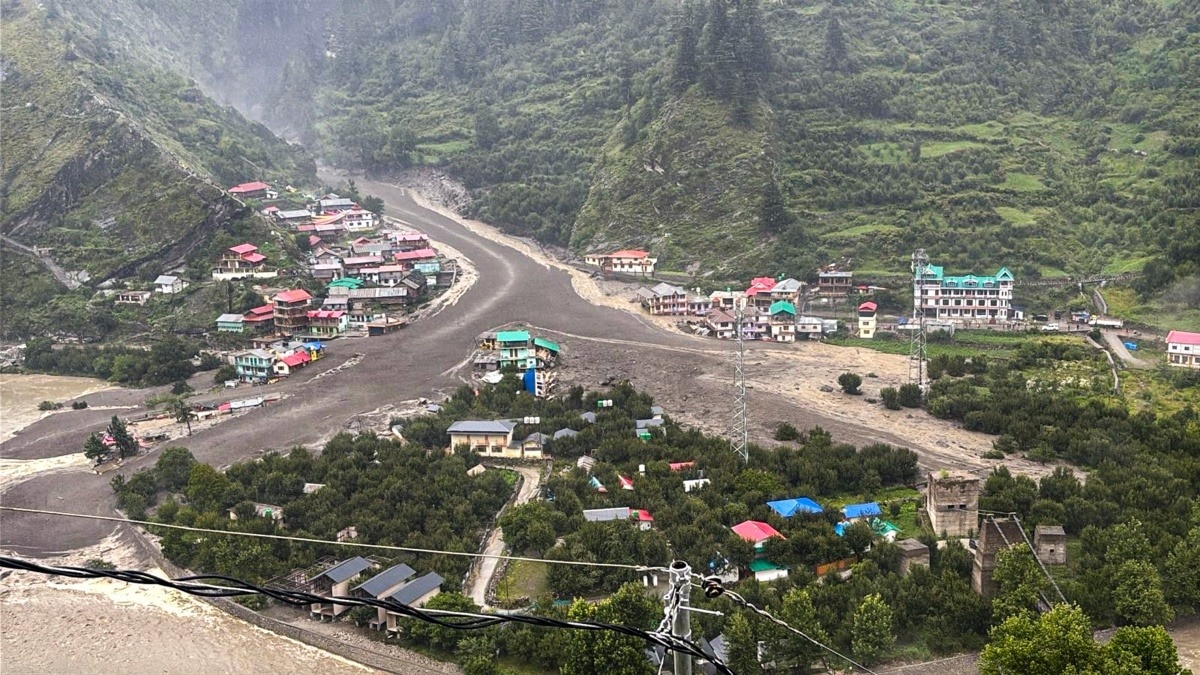On August 5, 2025, the quiet Himalayan village of Dharali in Uttarkashi, Uttarakhand, witnessed a sudden and violent natural disaster that turned life upside down in seconds. Homes, shops, and roads were ripped apart by a fast-moving flood, leaving behind destruction and despair. Initially attributed to a cloudburst, further expert investigations have since revealed a much more complex blend of contributing factors—ranging from climate change and glacial activity to irresponsible development and ecological mismanagement.
This blog aims to dive deep into the sequence of events, identify the real causes, and reflect on how a combination of fragile terrain, modern development, and oversight failure led to one of the most devastating disasters in recent memory.
The Disaster Unfolds: What Happened in Dharali?
In the early hours of August 5, residents of Dharali woke up to roaring waters sweeping through their village. The floodwaters came with such intensity that buildings were flattened and roads were obliterated within minutes. Tragically, four lives were officially confirmed lost, while over 100 people were reported missing. Several children, elderly individuals, and entire families were caught off guard.
Rescue teams from the State Disaster Response Force (SDRF), National Disaster Response Force (NDRF), local administration, and the Indian Army were deployed immediately. Helicopters conducted aerial rescues, but many roads leading into the village were blocked by landslides, severely hampering relief efforts.
What Caused the Disaster: Cloudburst or Glacial Lake Outburst?
Initial Cloudburst Theory
Initial reports categorized the tragedy as a result of a cloudburst, which refers to extreme, localized rainfall—typically more than 100 mm within an hour. However, rainfall data from the Indian Meteorological Department did not support this claim. Recorded rainfall in the region during the period was moderate, around 8–27 mm, well below cloudburst levels.
The Emerging Glacial Lake Outburst (GLOF) Explanation
Experts now lean toward a more nuanced cause—a Glacial Lake Outburst Flood (GLOF). Satellite imagery indicated the presence of multiple glacial lakes upstream from Dharali. When these lakes reach critical levels due to melting glaciers and heavy rainfall, they can suddenly breach their natural barriers. This results in an uncontrollable surge of water and debris cascading down the mountainsides—wiping out everything in its path.
This hypothesis aligns closely with the speed and scale of the destruction. The absence of heavy rain combined with the ferocity of the flood points towards an upstream glacial breach, rather than an atmospheric deluge.
Why Is Uttarkashi So Vulnerable?
The disaster in Dharali was not a freak incident but rather a symptom of deeper issues plaguing the Himalayan region.
1. Fragile Himalayan Terrain
The Himalayas are young fold mountains, geologically unstable and constantly shifting due to tectonic activity. This natural fragility makes the region particularly prone to landslides, floods, and erosion. Add to this the effects of rapid glacier retreat and increased rainfall due to climate change, and the risks multiply.
Uttarakhand has experienced over 12,000 landslides between 1988 and 2023, with an alarming uptick in frequency and severity over the last decade.
2. Reckless Development in Eco-Sensitive Zones
Despite being located within the Bhagirathi Eco-Sensitive Zone—a region that’s supposed to have stringent environmental regulations—Dharali and surrounding areas have seen unregulated infrastructure growth. The construction of roads, hotels, helipads, and even hydroelectric projects has disrupted the natural drainage systems and weakened the slopes.
Haphazard hill-cutting, deforestation, and encroachment onto floodplains have significantly increased the vulnerability of these zones to natural disasters.
3. Climate Change Amplifying Hazards
Global climate shifts are making extreme weather events more frequent and unpredictable. Melting glaciers are swelling glacial lakes. Meanwhile, changes in monsoon patterns, driven by El Niño and other global weather systems, have increased the risk of sudden storms and floods.
While climate change is a major contributor, experts caution that it should not be used as a scapegoat. It’s the interaction of climate with poorly managed development and outdated planning models that turns a hazard into a catastrophe.
Expert Insights: What Went Wrong
Environmental experts and geologists have emphasized that disasters like Dharali’s are preventable with the right monitoring and policy frameworks in place.
One academic from Doon University pointed out that heavy rainfall may have pushed the glacial lakes past a tipping point, triggering a violent breach. The resulting surge of water, combined with rock and sediment, was enough to demolish entire sections of the village within minutes.
Disaster management experts have also highlighted systemic failures, such as the lack of early warning systems and the poor enforcement of land-use regulations. Many structures in high-risk zones were built without proper environmental assessments or safeguards.
Human, Environmental, and Economic Costs
The Uttarkashi tragedy has left a long trail of damage.
- Lives Lost: Families are still searching for loved ones. The psychological impact on survivors—many of whom watched their homes disappear—is immeasurable.
- Infrastructure: Roads, electricity lines, homes, and tourist facilities were decimated, cutting off villages and affecting livelihoods.
- Environmental Damage: The removal of vegetation for roads and tourism projects weakened slope stability, contributing to landslides. Riverbanks were destabilized, and aquatic ecosystems may take decades to recover.
What Needs to Change: Short-Term & Long-Term Solutions
Immediate Measures
- Rescue & Relief: Continued deployment of disaster response teams and setting up temporary shelters, food supplies, and medical aid.
- Access Restoration: Clear blocked roads and restore communication and power supply to isolated villages.
Long-Term Reforms
- Monitoring Glacial Lakes
- Installation of sensors and satellite-linked surveillance for high-risk lakes.
- Community-based alert systems in remote villages.
- Environmental Oversight
- Strict enforcement of building codes and zoning laws in eco-sensitive regions.
- Penalties for illegal construction and deforestation.
- Slope Stabilization
- Use of bioengineering techniques to stabilize hillsides.
- Regulated and minimal cutting of hill terrain.
- Data-Driven Early Warning Systems
- Integration of meteorological, geological, and hydrological data.
- Use of AI and satellite imaging to predict flash floods and landslides.
- Sustainable Tourism Planning
- Limit construction in fragile areas.
- Encourage homestays, eco-lodges, and other low-impact tourism models.
Broader Implications: A Warning for the Future
This is not the first time Uttarakhand has faced such a calamity. The 2013 Kedarnath floods and the 2021 Chamoli disaster followed a similar script—natural vulnerabilities exacerbated by unregulated human activities.
The region is caught in a cycle where each tragedy is followed by promises of reform—most of which fade with time. Without proactive, science-backed, and community-oriented planning, these events will continue with growing frequency and intensity.
Conclusion: Rethinking Development in the Himalayas
The Uttarkashi disaster isn’t just a story about nature’s fury—it’s a cautionary tale about ignoring environmental limits. The balance between development and ecology has tipped too far, and the costs are now being paid in human lives and ecological collapse.
For the Himalayas to thrive, we must move away from short-term economic gains and towards climate-resilient, environmentally conscious planning. Strengthening disaster response, enforcing ecological laws, and involving local communities in decision-making are essential steps.
Nature cannot be controlled, but its risks can be managed—if we choose to respect its boundaries.

